France June 2016 - Palace of Fontainebleau
|
|
We started this morning by driving from Melun to Fontainebleau which is renowned for the large and scenic forest of Fontainebleau, a favourite weekend getaway for Parisians, as well as for the historic Château de Fontainebleau, which once belonged to the kings of France.
The historic Chateau (or Palace) of Fontainebleu.
Many of the dramatic events of Napoleon's life took place here, which is why I wanted to see it, although Francis I gets credit for most of Fontainebleu's creation.
|
| |
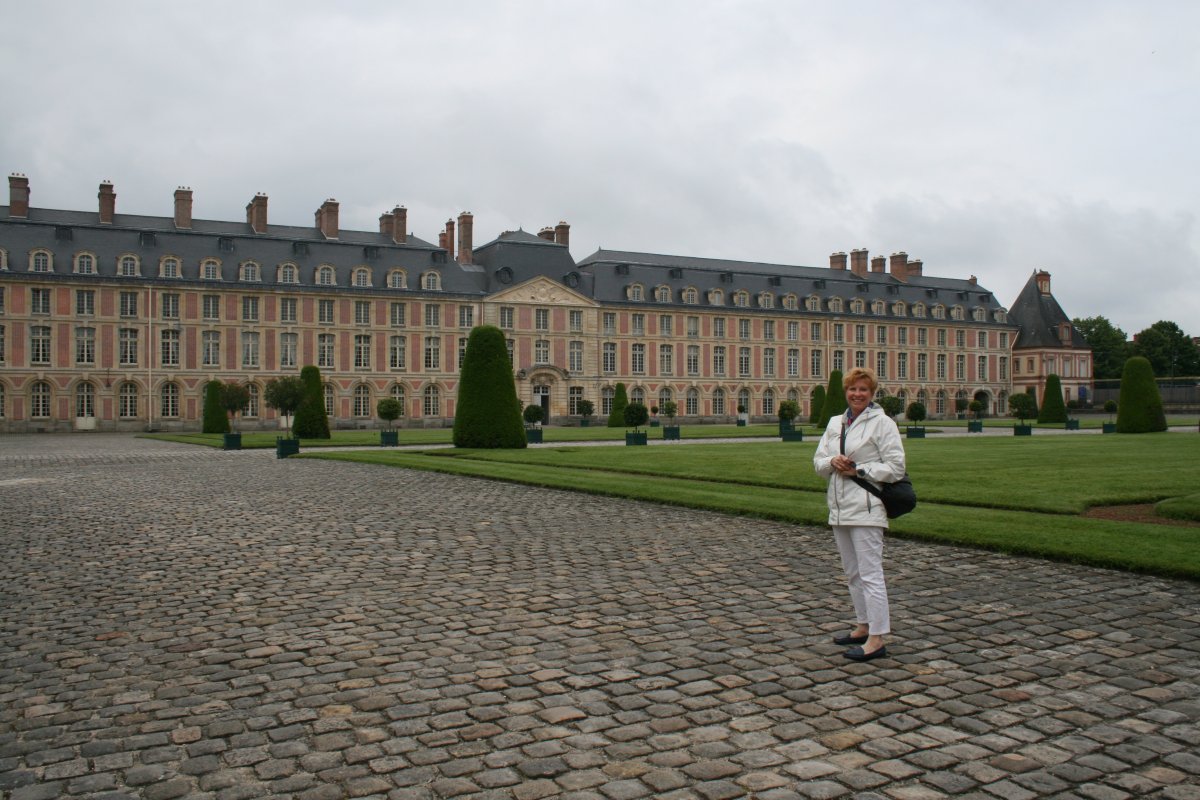 |
|
|
The earliest record of a fortified castle at Fontainebleau dates to 1137.[3] It became a favorite residence and hunting lodge of the Kings of France because of the abundant game and many springs in the surrounding forest. It took its name from one of the springs, the fountain de Bliaud, located now in the English garden, next to the wing of Louis XV.
Fontainebleu was the Château of Francis I (1528–1547), Henry II and Catherine de' Medici (1547–1570), Henry IV (1570–1610), and Kings Louis XIII through Louis XVI.
Napoleon spent the last days of his reign at Fontainebleau, before abdicating there on 4 April 1814, under pressure from his marechals, Ney, Berthier, and Lefebvre. On 20 April, after failing in an attempt to commit suicide, he gave an emotional farewell to the soldiers of the Old Guard, assembled in the Court of Honor. Later, during the One Hundred Days, he stopped there on 20 March 1815. In his memoires, written while in exile on Saint Helena, he recalled his time at Fontainebleau; “…the true residence of Kings, the house of the centuries. Perhaps it was not a rigorously architectural palace, but it was certainly a place of residence well thought out and perfectly suitable. It was certainly the most comfortable and happily situated palace in Europe.”
Following the restoration of the Monarchy, Kings Louis XVIII and Charles X each stayed at Fontainebleau, but neither made any major changes to the palace. Louis-Philippe was more active, both restoring some rooms and redecorating others in the style of his period. Emperor Napoleon III, who had been baptized at Fountainebleau, resumed the custom of long stays at Fontainebleau, particularly during the summer.
|
| |
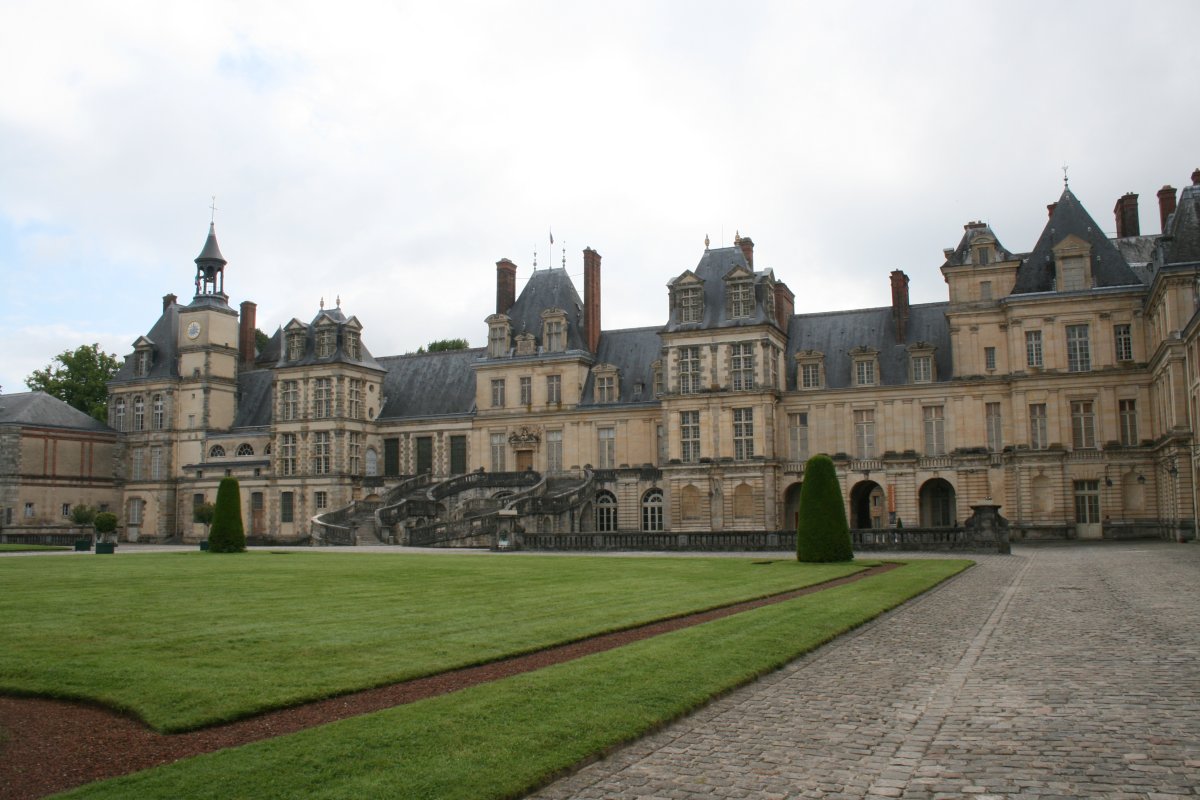 |
|
| In this courtyard, Napoleon gave his emotional farewell to the soldiers of the Old Guard. |
| |
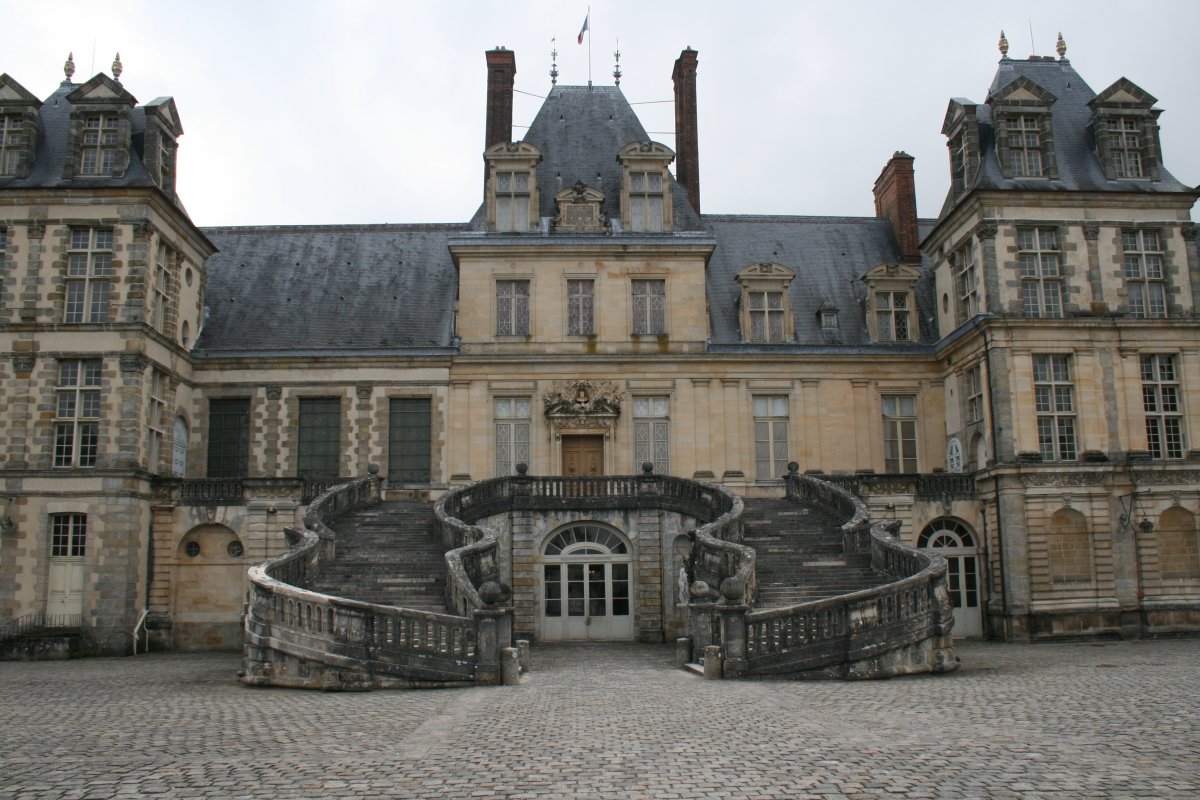 |
|
|
“On the 20 April at noon … Napoleon left his rooms… He descended the flight of steps [above the Cour du Cheval-Blanc, at Fontainebleau Palace] and, passing the row of carriages, he advanced towards the Guard. He made a sign that he wished to speak. Everyone fell silent, and in a most devoted quiet, they listened to his last words.
‘Soldiers of my Old Guard, I bid you farewell. For twenty years you have been my constant companions on the road to honour and glory. In these latter times, as in the days of our prosperity, you have never ceased to be models of courage and fidelity. With men such as you our cause would not have been lost; but the war would have been interminable; it would have been a civil war, and France would only have become unhappier still. I have therefore sacrificed all of our interests to those of la patrie; I shall depart. But you, my friends, continue to serve France. Her happiness was my only thought; it shall continue to be the object of my desires. Do not lament my fate; the only reason I have allowed myself to survive was so that I could further serve our glory. I want to write down the great deeds which we have done together. Adieu, my children! Would that I could press you all to my heart. Let me at least embrace your standard….!’
At these words, General Petit, seized the aigle and stepped forward. Napoleon took the general in his arms and kissed the standard. The silence which this great scene imposed was broken only by the sobs of the soldiers. Napoleon, visibly moved, pulled himself together and began again with a stronger voice:
‘Once again, adieu, my old companions! May this last kiss pass to your hearts!’
Thus he spoke, and bursting out of the group which had formed around him, he threw himself into his carriage…”
|
| |
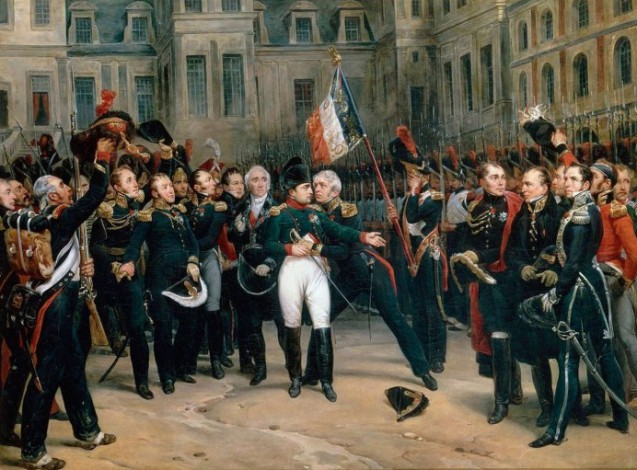 |
|
|
A huge portrait of the great man. Paul Johnson called him the most efficient man the world has ever known.
|
| |
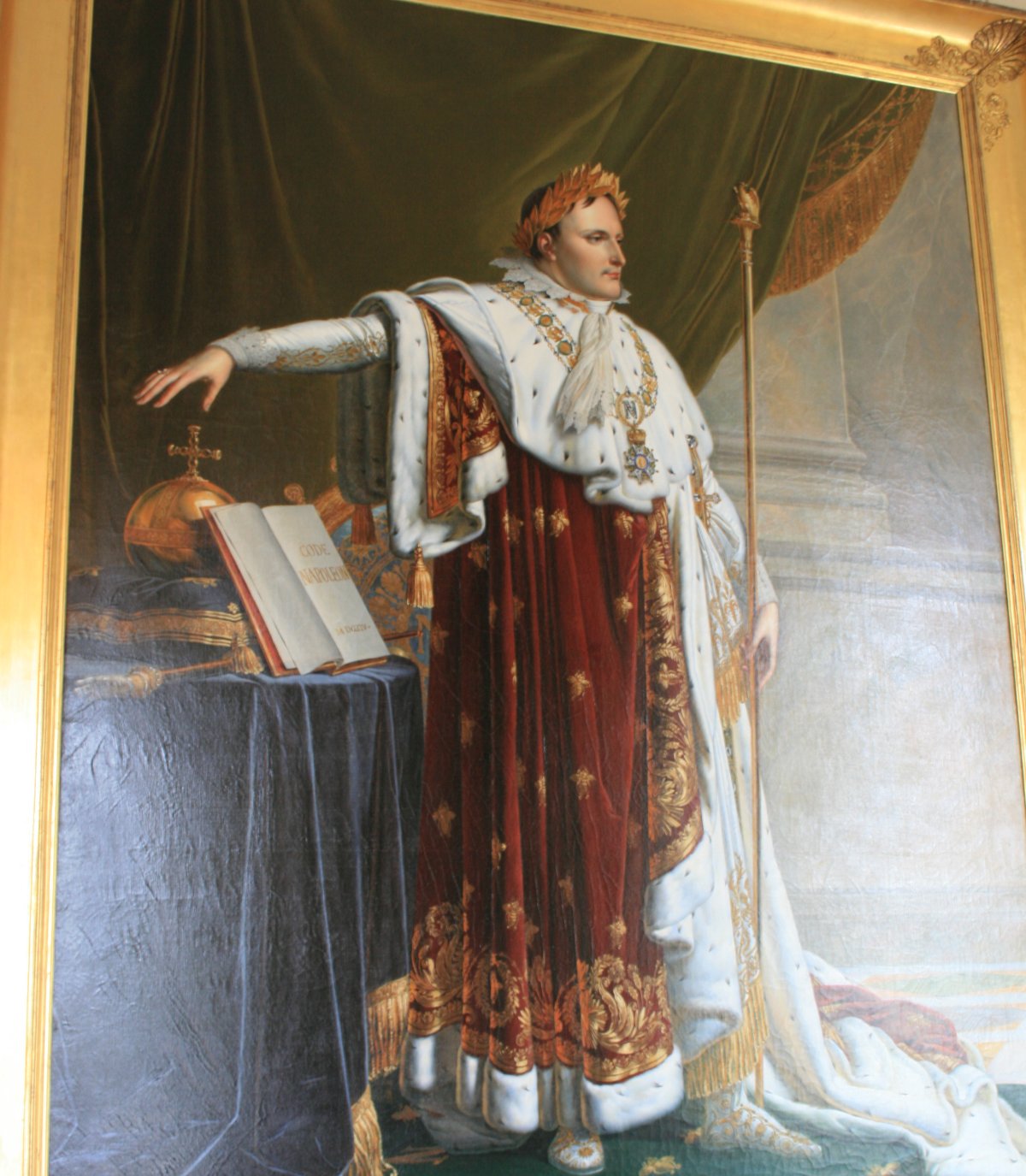 |
|
|
On the right side of the Court of Honor is the Museum of Napoleon I, created in 1986. This is where the apartments of the princes of the First Empire had been located. The museum includes a gallery of portraits of members of Napoleon's family, medals and decorations, several costumes worn during Napoleon's coronation as Emperor, and a gold leaf from the crown he wore during the coronation; a large collection of porcelain and decorative objectives from the Imperial dining table, and a cradle, toys, and other souvenirs from the Emperor's son, the King of Rome. It also has a collection of souvenirs from his military campaigns, including a recreation of his tent and its furnishings and practical items which he took with him on his campaigns. Per Ira Caro, the descendants of Napoleon, for some reason, gave their gifts to Fontainebleu rather than to Compiegne or Malmaison, which were more his creations.
The hat and cloak Napoleon wore in the field campaigning with La Grande Armee. |
| |
 |
|
| The magnificent Gallery of Francis I which is pretty much as it was during his reign. The paintings are by Rosso Fiorentino. Each one has a story that only members of the inner sanctum sanctorium would know. |
| |
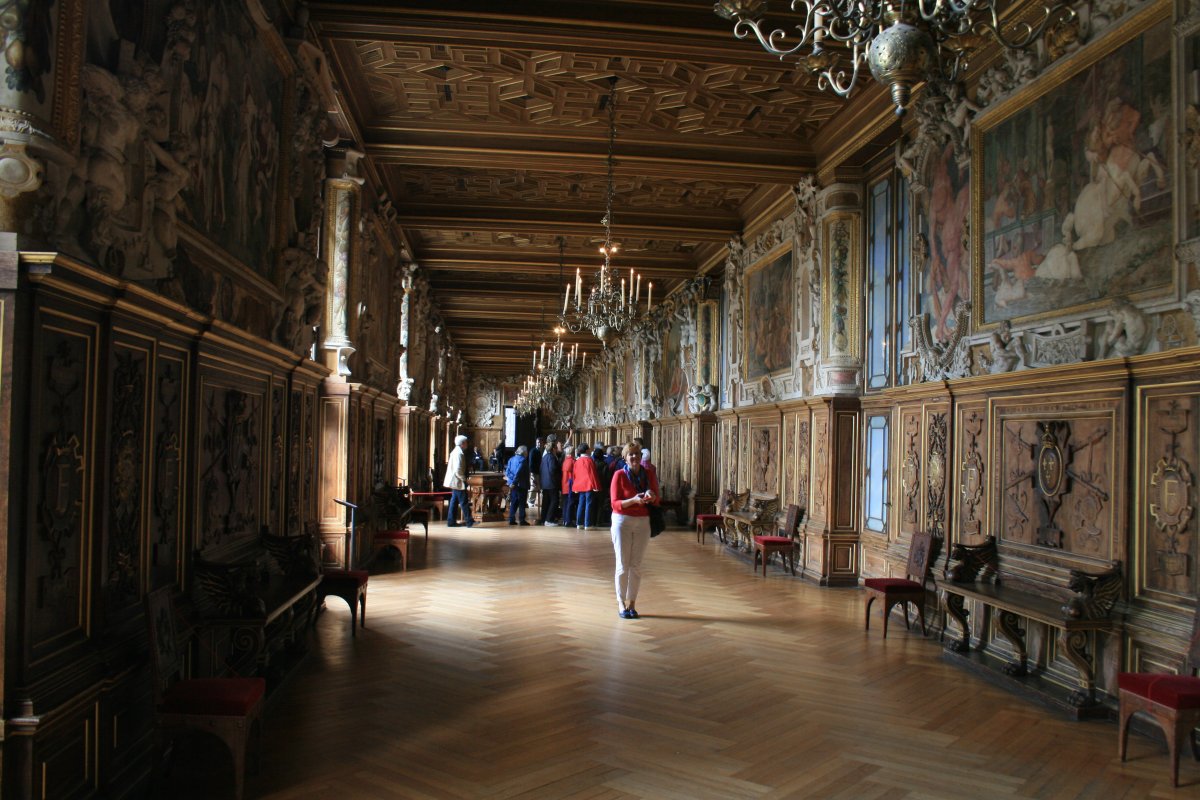 |
|
| By this stage of the trip, we are well acquanted with King Francis I. (1533–1539). As we know by now, Francis brought the Italian Renaissance to France by summoning the greatest artists and architects of the age. |
| |
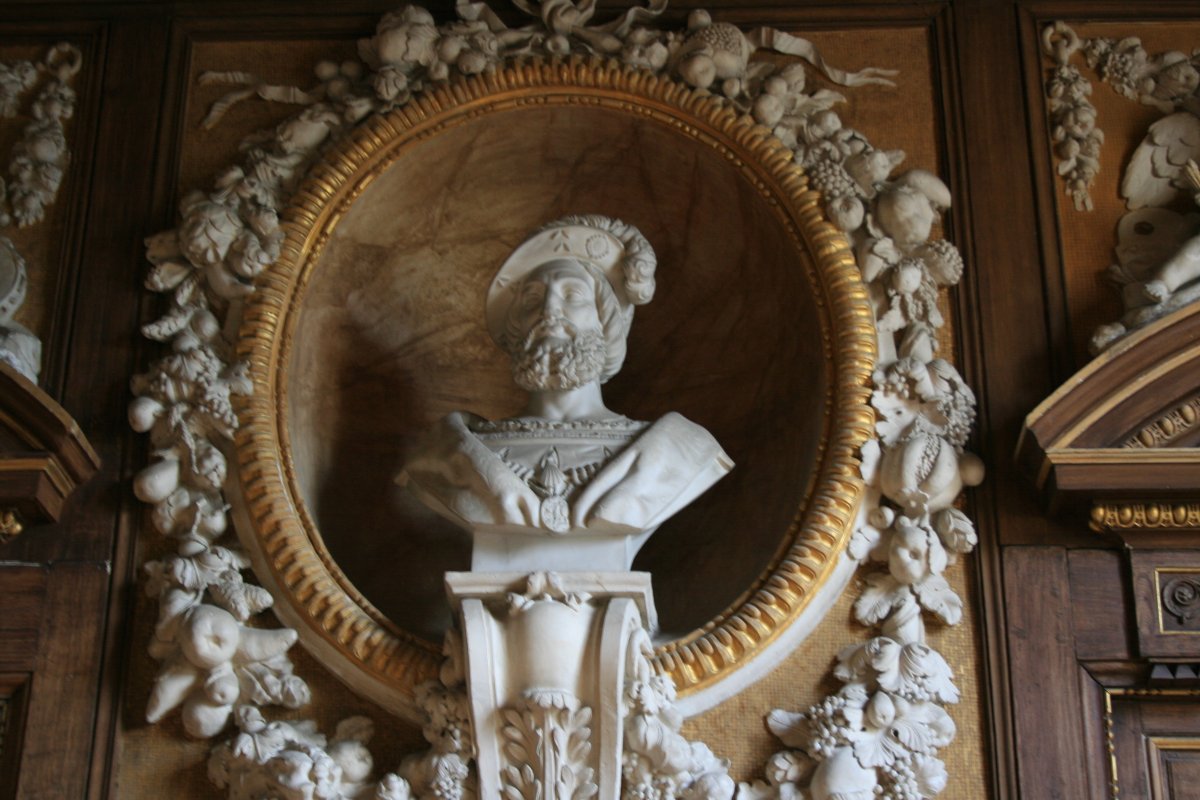 |
|
|
The Gallery of Diana
|
| |
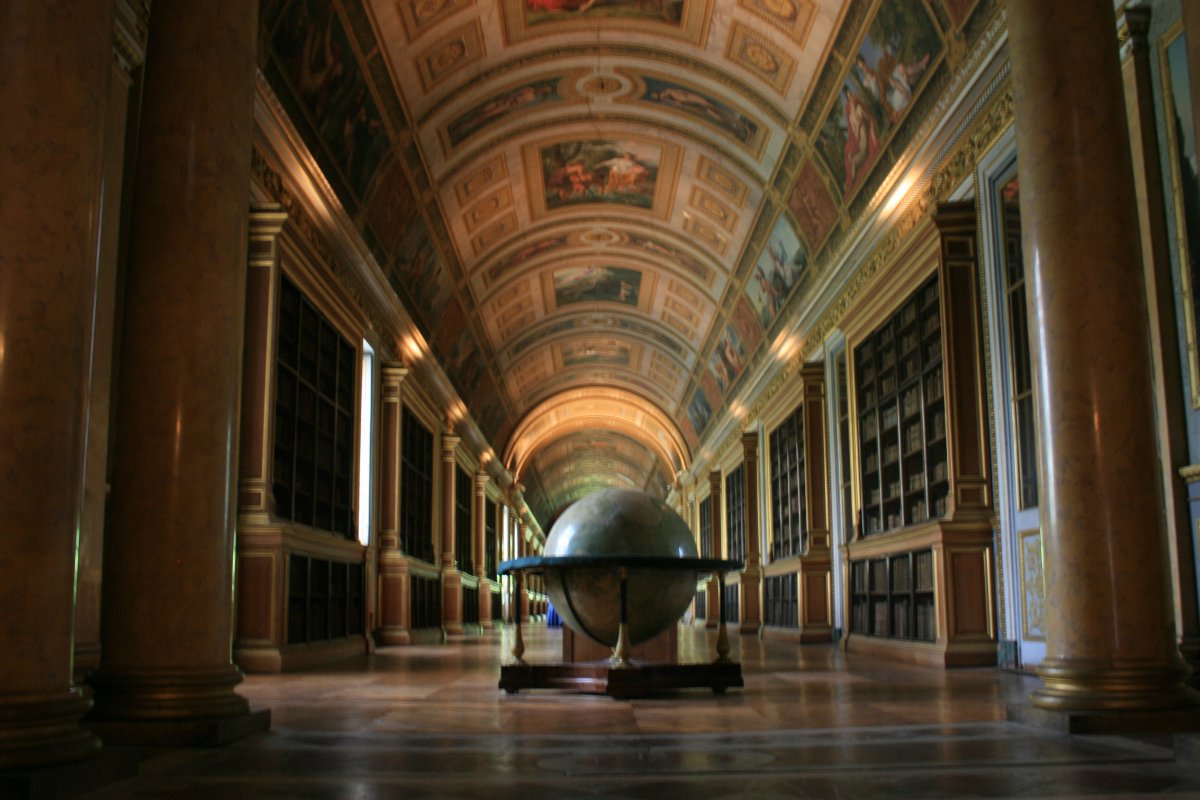 |
|
| We moved on to the Grand Apartments. There were so many amazing rooms I cannot describe. This one was particularly beautiful and was the bedchamber of the Queens |
| |
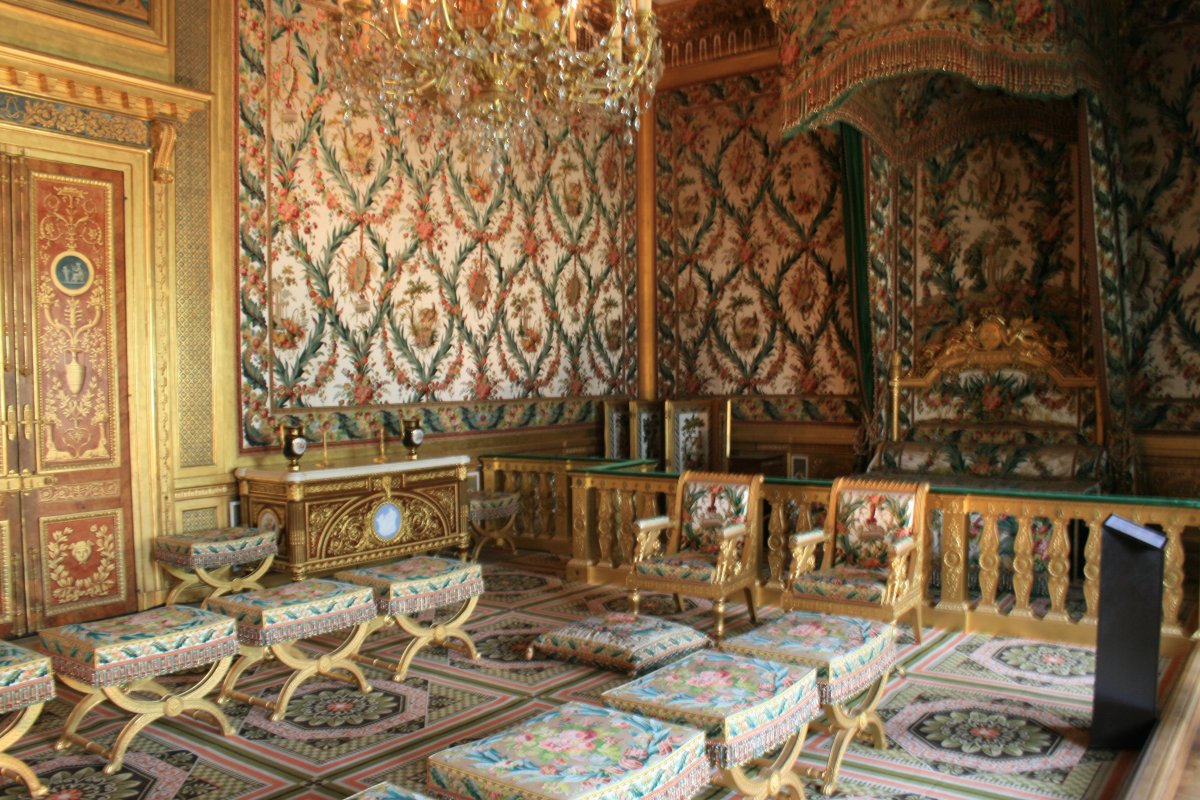 |
|
|
In 1808 Napoleon decided to install his throne in the former bedroom of the Kings of France from Henry IV to Louis XVI, on the place where the royal bed had been.
|
| |
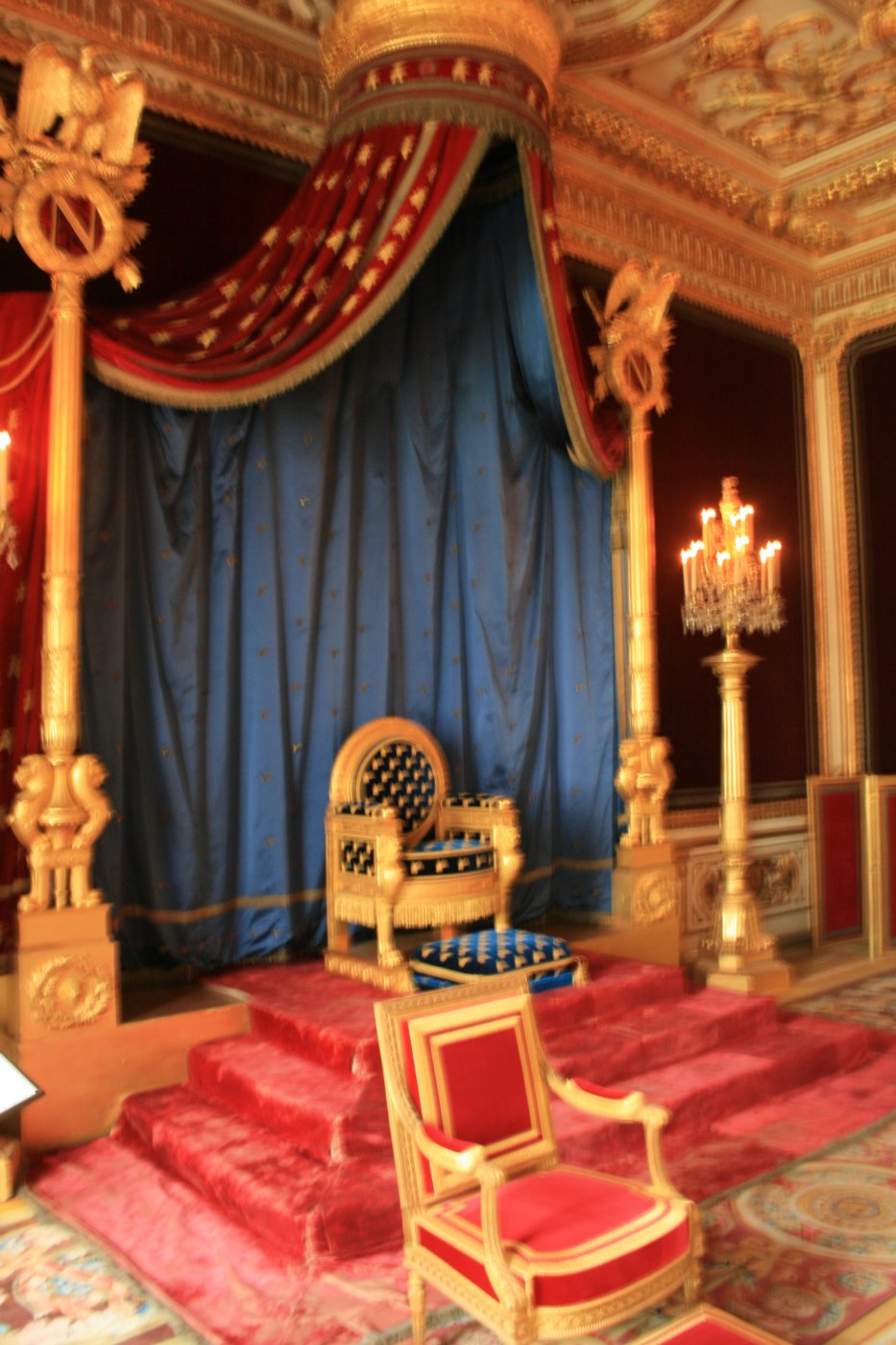 |
|
| The Chapel of the Trinity (17th-18th century) |
| |
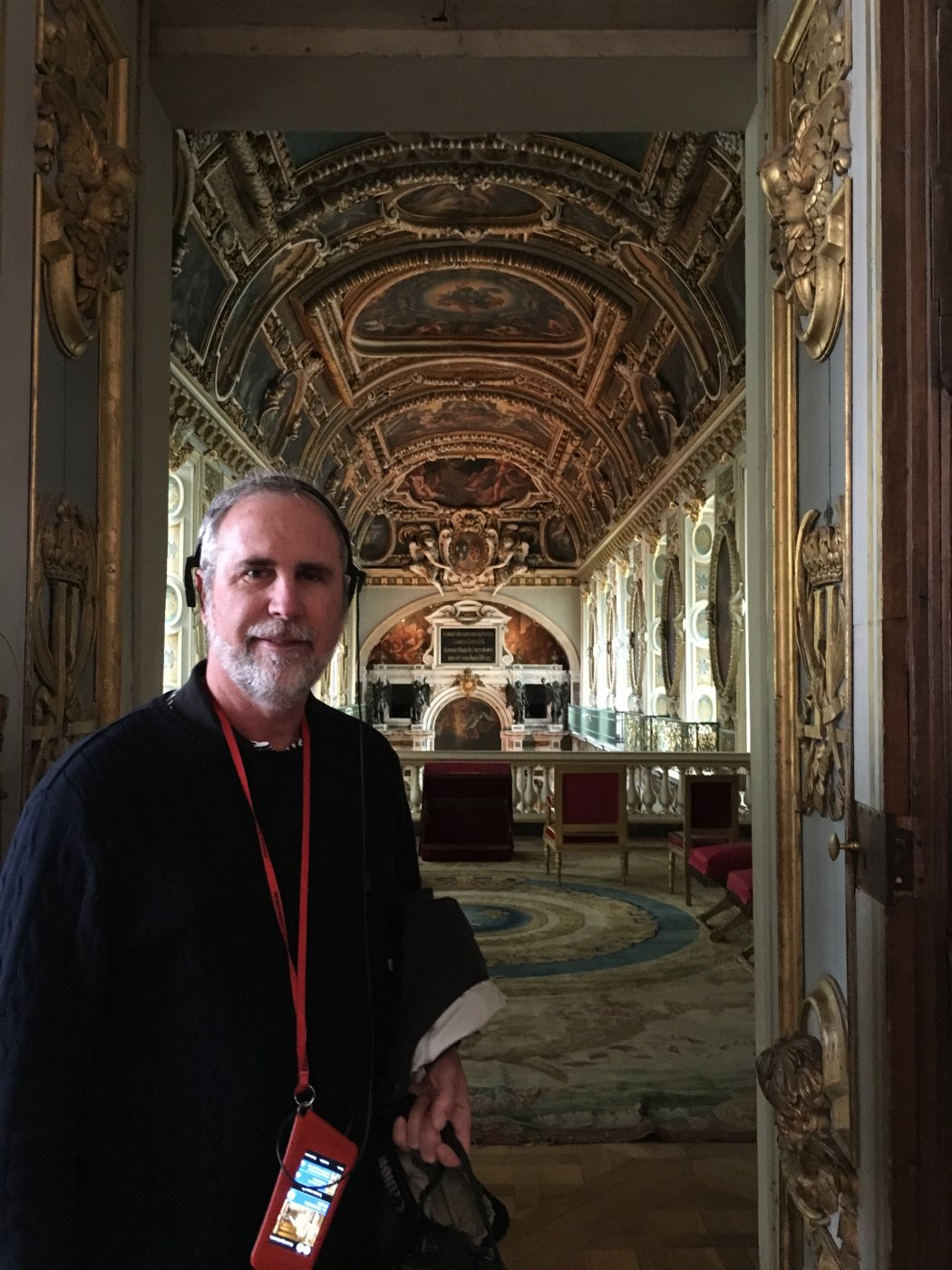 |
|
| Amazing art. |
| |
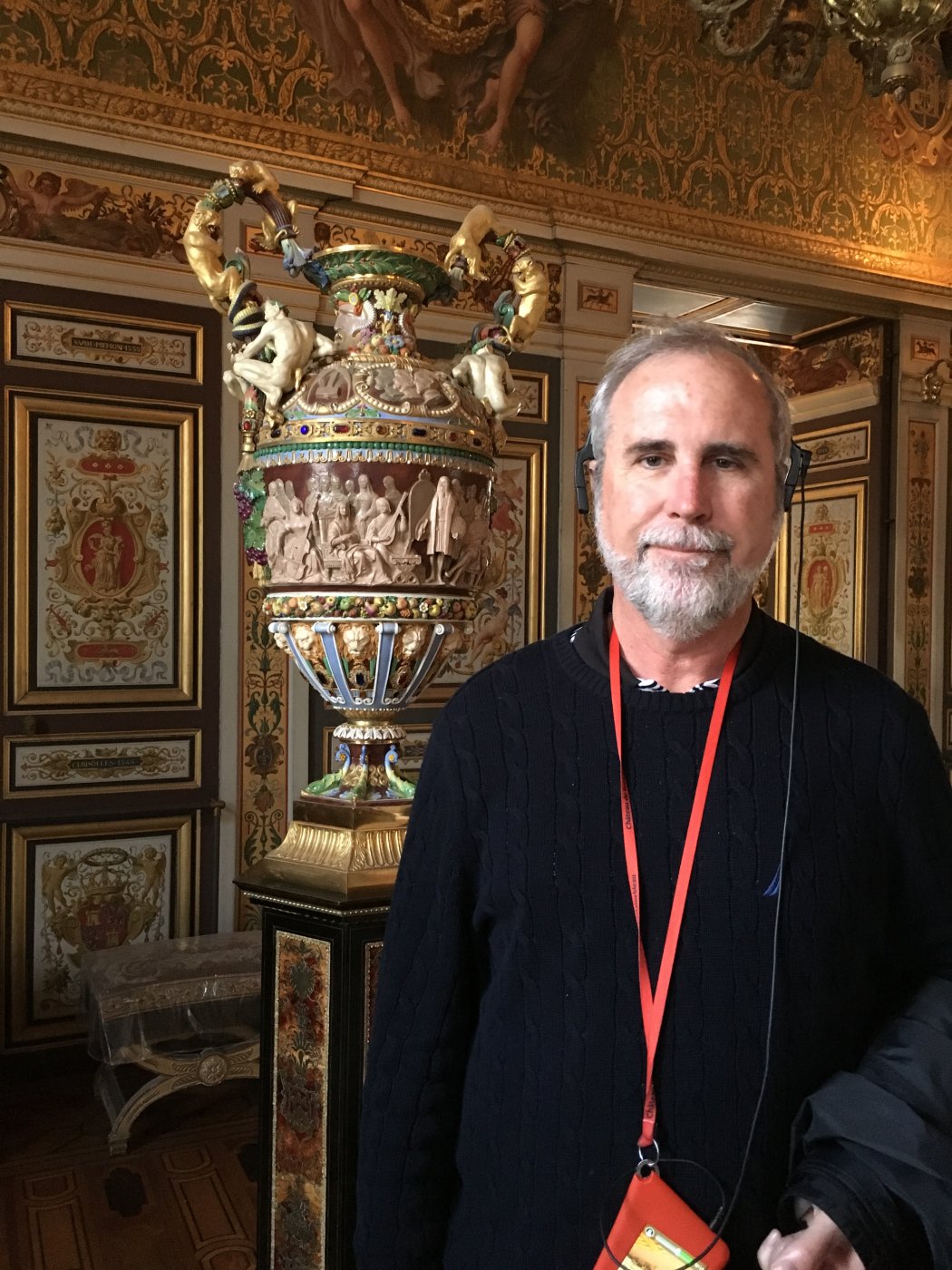 |
|
|
From the time of Francis I, the palace was surrounded by formal gardens, representing the major landscaping styles of their periods; the French Renaissance garden, inspired by the Italian Renaissance gardens; the French formal garden, the favorite style of Louis XIV; and, in the 18th and 19th century, the French landscape garden, inspired by the English landscape garden.
|
| |
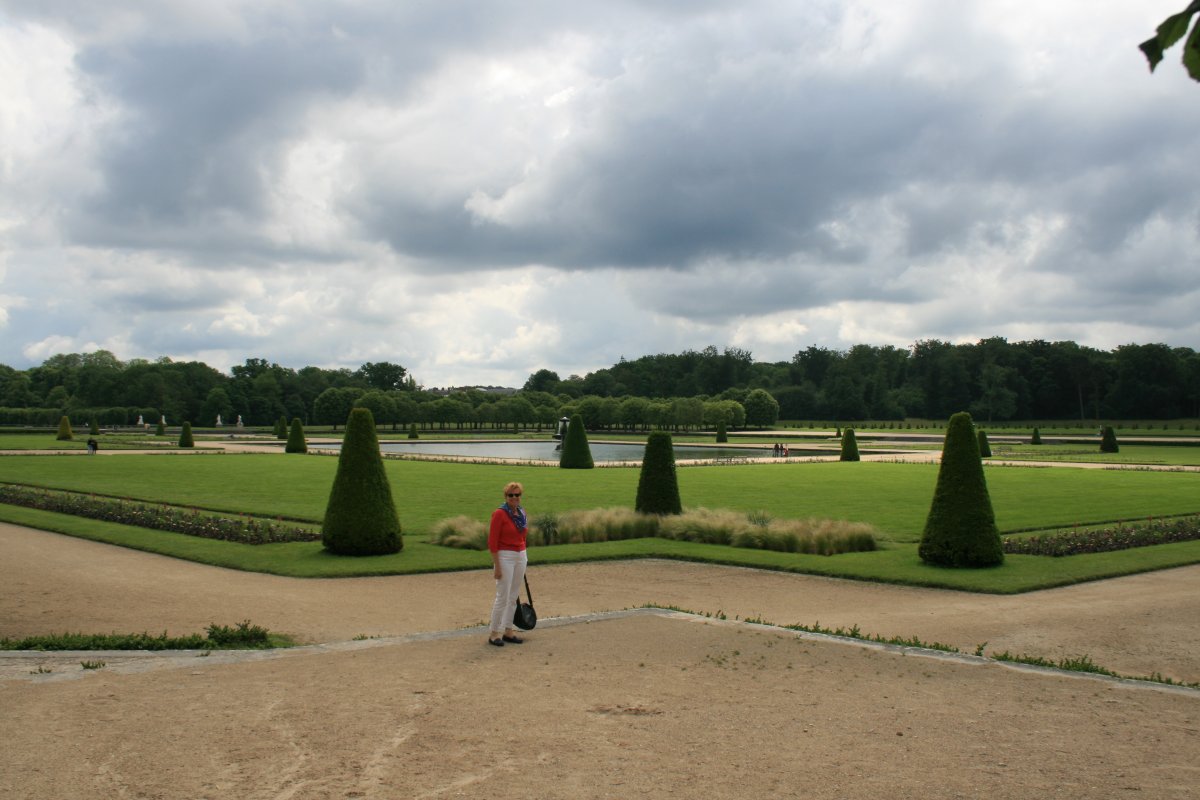 |
|
| A look back at the Palace, with threatening rain clouds above. |
| |
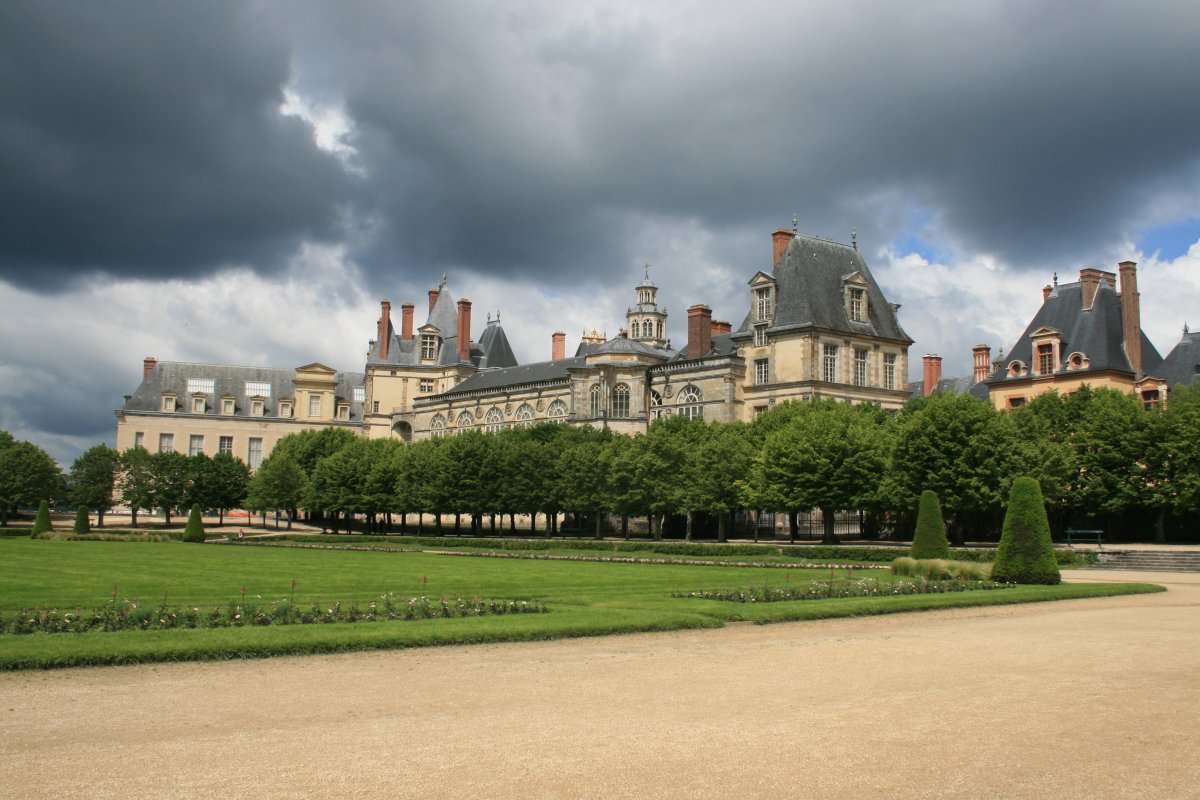 |
|
|
|
| |
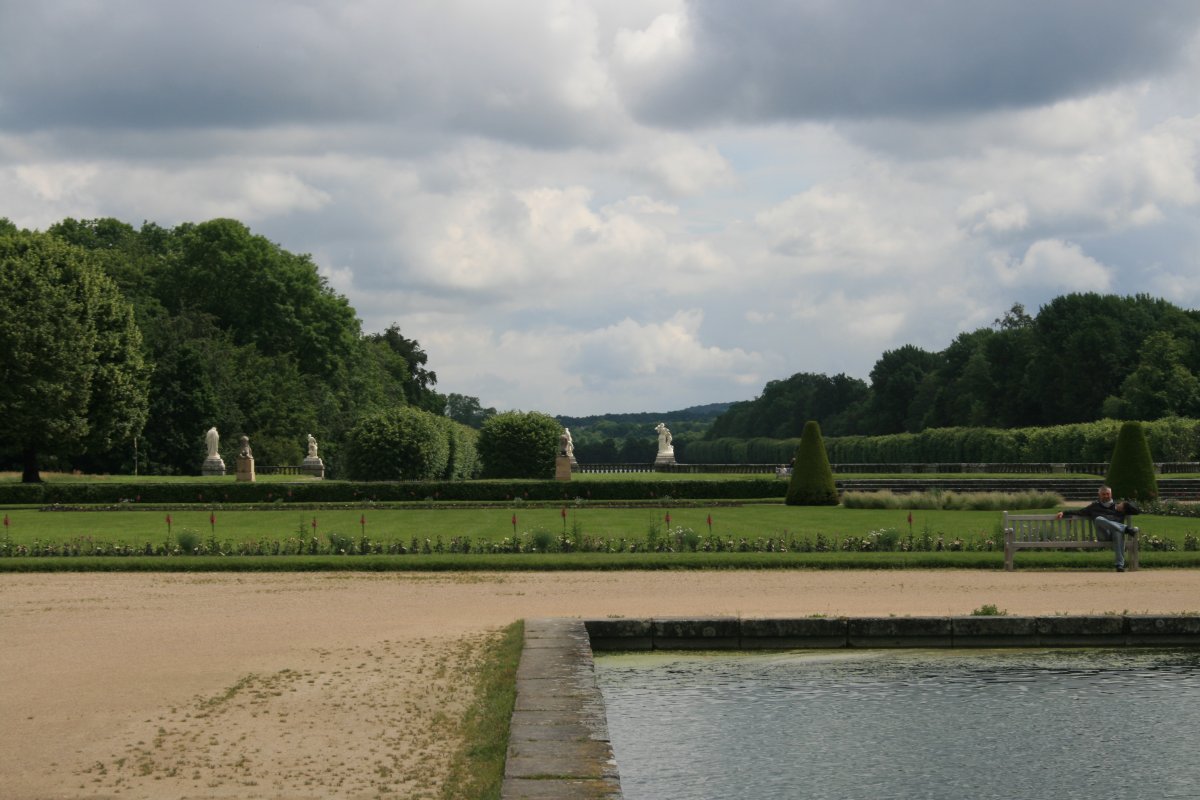 |
|
| |
| |
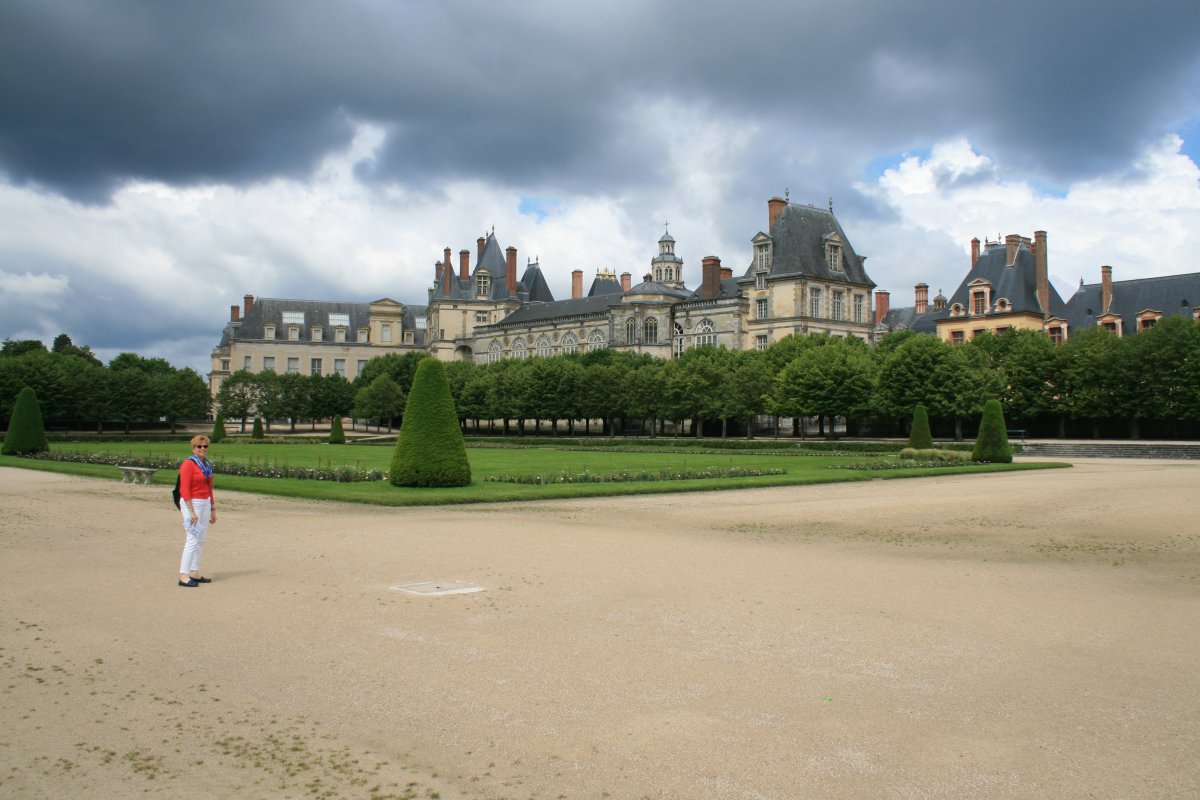 |
|
| I'd highly recommend Fontainebleu to anyone visiting northern France. Surprisingly, like Vaux Le Vicomte, it is not in Rick Steve's France book (2014 edition). |
| |
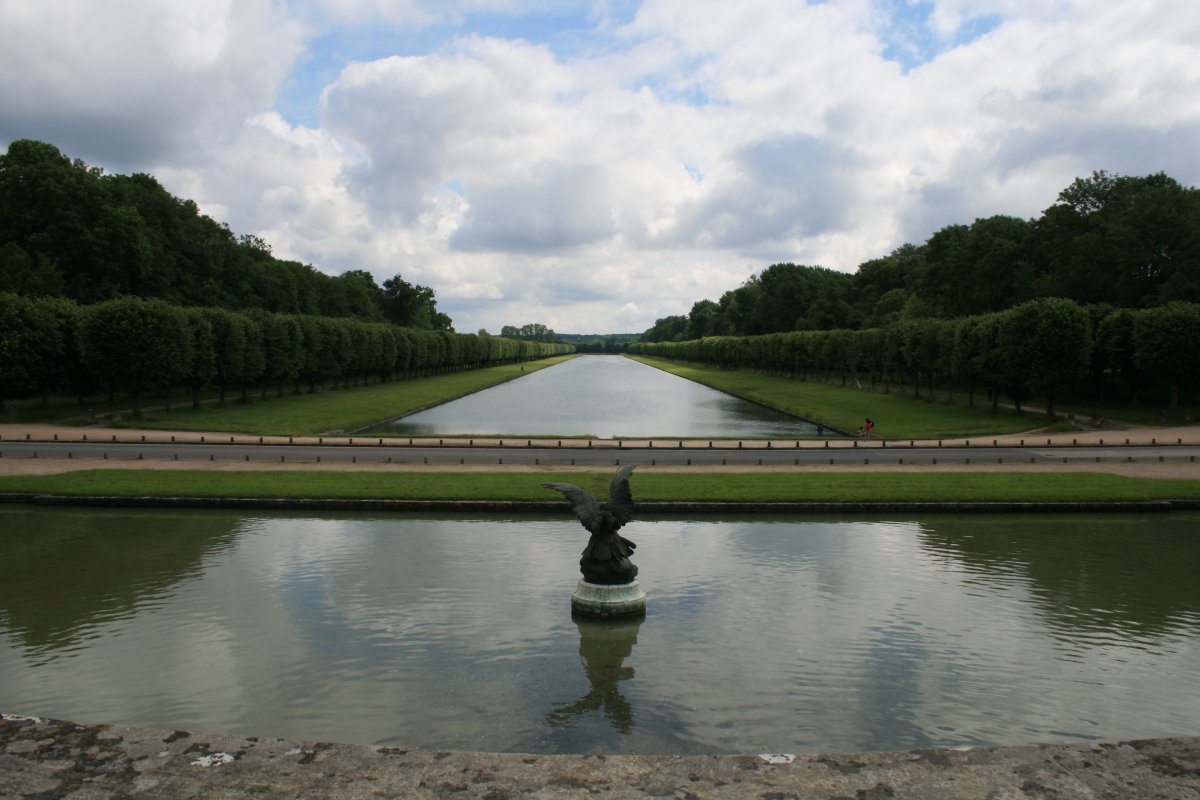 |
|
| |
| |
|
|
|
|
|
|

















